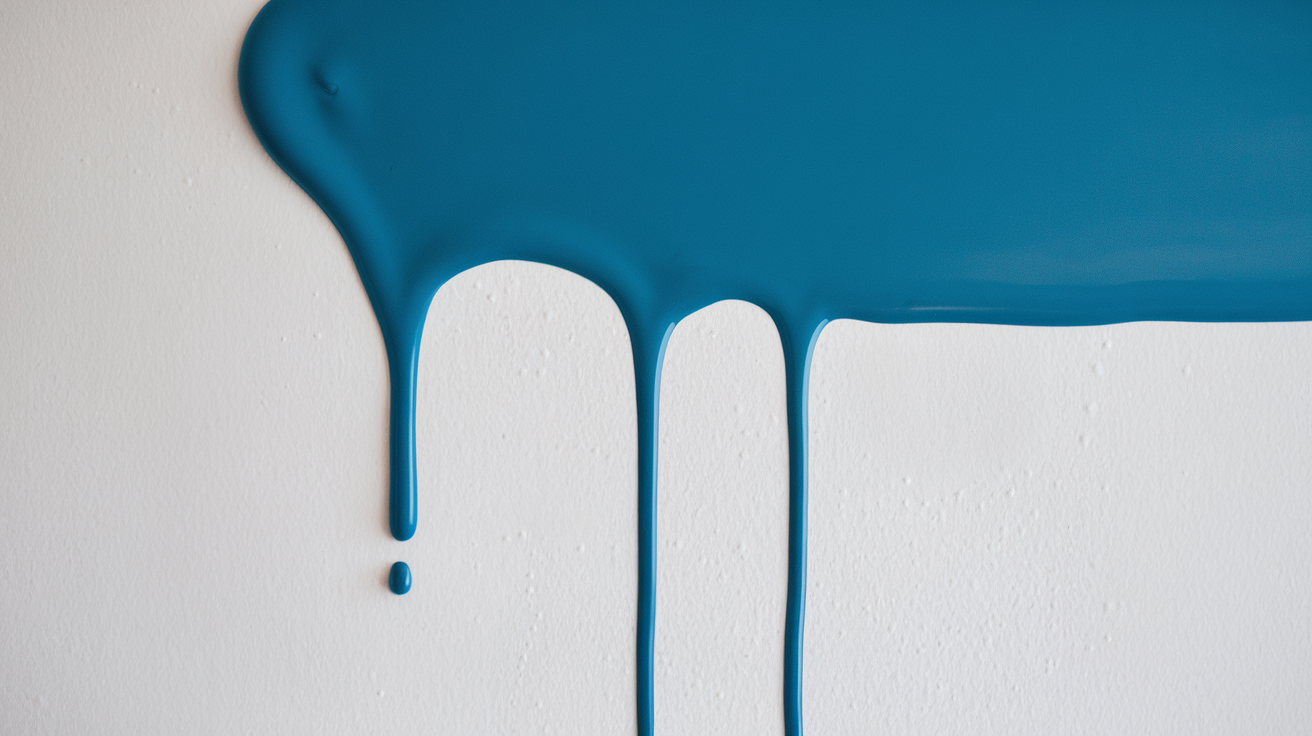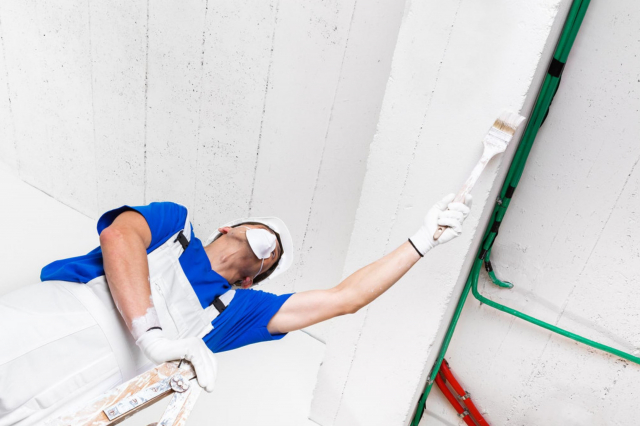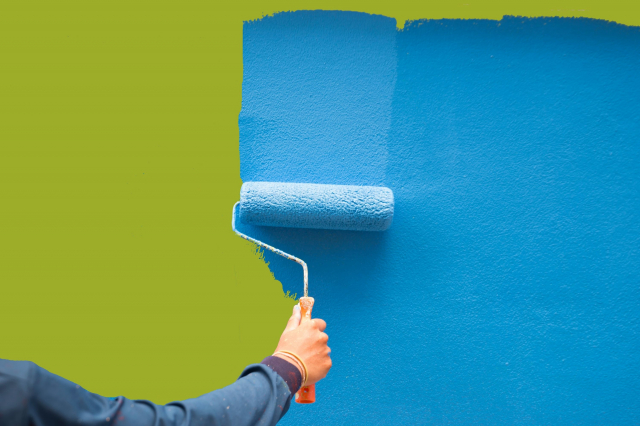Can I Use Ceiling Paint on Walls?
We will explain whether ceiling paint is suitable for walls
You’re in the middle of a home refresh, and after tackling the ceilings, you find yourself with some leftover paint.
Naturally, a thought crosses your mind: Can I use this ceiling paint on my walls? It might seem like a simple solution—why not make use of that extra paint instead of buying more, right?
But before you start rolling that paint onto your walls, let’s take a closer look at the key differences between ceiling paint and wall paint, and when (or if) it makes sense to use ceiling paint on walls.
In this article, we’ll cover the pros and cons, how ceiling paint compares to wall paint, whether you can use ceiling paint as a primer, and if wall paint works for ceilings.
Can I Use Ceiling Paint on Walls?
No, ceiling paint is not recommended for walls due to its lack of durability and cleanability. However, it can be used in low-traffic areas like closets or as a primer in some cases.
Ceiling paint is designed specifically for overhead surfaces. Its thicker consistency helps prevent drips and splatters. Most ceiling paints come in a flat or matte finish, which reduces light reflection and keeps the focus off the ceiling.
Off-white ceiling paint is a popular choice, as it complements many home styles with its neutral, clean appearance. However, ceiling paint has fewer color options than wall paint, and its flat finish and high viscosity make it ideal for ceilings but not always suitable for walls.
Is There a Prominent Difference Between Wall Paint and Ceiling Paint? Ceiling Paint vs Wall Paint
Yes, there is a difference between wall paint and ceiling paint.
Ceiling paint is thicker, designed to prevent drips and provide better coverage of imperfections with a flat or matte finish to reduce reflection. Wall paint, on the other hand, is thinner, more durable, and available in a variety of finishes, making it better suited for vertical surfaces that require easier cleaning and can withstand more wear and tear.
- Viscosity: Ceiling paint is thicker, while wall paint is thinner for easier application on vertical surfaces.
- Finish: Ceiling paint typically has a flat or matte finish to reduce reflection, whereas wall paint comes in a variety of finishes like eggshell, satin, and gloss.
- Durability: Wall paint is more durable and designed to handle wear and tear, while ceiling paint is less resilient.
- Coverage: Ceiling paint provides better coverage in one coat due to its high viscosity, while wall paint may require multiple coats.
- Cleanability: Wall paint is easier to clean, while ceiling paint is not formulated for scrubbing or heavy cleaning.
- Purpose: Ceiling paint is specifically formulated for overhead surfaces, while wall paint is meant for vertical surfaces like walls and trims.
- Color Options: Wall paint offers a wide variety of color options, while ceiling paint usually comes in limited shades.
- Cost: Ceiling paint is generally less expensive than wall paint, as it often requires fewer coats for coverage.
1.Viscosity: Ceiling Paint is Thicker than Wall Paint
Ceiling paint is formulated with a thicker consistency, which helps to prevent drips and splatters when painting overhead surfaces. This high viscosity allows the paint to adhere better to the ceiling and ensures more efficient coverage of imperfections like cracks or uneven textures. In contrast, wall paint is thinner, making it easier to spread on vertical surfaces without dripping, which is essential for maintaining an even coat on walls.

housekeepingbay.com
2.Finish: Flat vs. Glossy Options
Ceiling paint almost always comes in a flat or matte finish. This finish is specifically designed to minimize reflection, keeping attention away from the ceiling while helping to hide surface imperfections. Wall paint, however, comes in a variety of finishes, from eggshell to satin and high-gloss. These finishes provide varying degrees of sheen and are chosen based on the room’s function, as glossier finishes are easier to clean and more resistant to stains.
3.Durability: Wall Paint Handles Wear and Tear Better
Wall paint is designed for durability, especially in high-traffic areas like hallways, living rooms, and kitchens. It’s built to withstand bumps, scuffs, and cleaning, which walls are more prone to. Ceiling paint, on the other hand, is not made to handle the same level of wear and tear since ceilings typically aren’t subject to as much contact or friction.
4.Coverage: Ceiling Paint Requires Fewer Coats
Due to its thicker formulation, ceiling paint provides better coverage in a single coat. Its high viscosity allows it to cover imperfections like cracks and stains more easily. Wall paint, being thinner, often requires multiple coats to achieve full coverage, particularly in areas with visible flaws or stains. This difference makes ceiling paint more efficient for its specific purpose, but not necessarily ideal for walls.

housekeepingbay.com
5.Cleanability: Wall Paint is Easier to Scrub
Wall paint is formulated to be cleaned, especially in finishes like eggshell, satin, or gloss, which are designed to withstand scrubbing without losing their integrity. This makes wall paint ideal for areas that may get dirty or smudged frequently, like kitchens and children’s rooms. Ceiling paint, by contrast, is not intended for frequent cleaning, and its flat finish can easily show marks or streaks if scrubbed.
6.Purpose: Ceiling Paint for Overhead, Wall Paint for Vertical Surfaces
The intended use of ceiling paint is strictly for overhead surfaces. Its thick consistency helps it adhere better when applied above, reducing the likelihood of drips. Wall paint, on the other hand, is meant for vertical surfaces and designed to flow more smoothly. Each type of paint is tailored to work best in its respective environment, ensuring the best possible results based on application.
7.Color Options: Wall Paint Offers More Variety
Wall paint comes in a wide range of colors, providing virtually limitless options for interior decoration. Whether you’re looking for bold, vibrant shades or subtle neutrals, wall paint is available in finishes and colors to match any aesthetic. Ceiling paint, on the other hand, is typically available in limited shades, often in whites and off-whites, since ceilings are not meant to stand out or compete with the color scheme of a room.
8.Cost: Ceiling Paint is Generally Cheaper
Ceiling paint is often more affordable than wall paint. Its formulation requires fewer pigments and finishing agents, making it less expensive to produce. In addition, because it provides better coverage in fewer coats, you often need less of it compared to wall paint, especially when painting large ceiling areas. However, since wall paint is made for durability and cleanability, the higher cost is justified by its extended performance on high-contact surfaces.
Can You Use Ceiling Paint as a Primer?
Yes, you can use ceiling paint as a primer in some situations. Its thickness and high coverage make it a decent option for priming walls if you’re looking to save time or money. Ceiling paint acts as a sealant, helping to hide imperfections and creating a smooth surface for your topcoat.
However, ceiling paint is not a replacement for traditional primer, especially for surfaces that require extra adhesion or for high-traffic areas. For projects where durability is crucial, use a dedicated primer formulated to prepare surfaces for specialized finishes.
When Might Using Ceiling Paint on Walls Be a Good Idea?
Although ceiling paint is generally better suited for overhead surfaces, there are a few cases where using it on walls could work:
- Closets or Utility Rooms: These are low-traffic areas where durability or maybe on some excessives like trim where aesthetics aren’t as important. Ceiling paint can provide quick, easy coverage in these spaces without requiring multiple coats of wall paint.
- Uniform Flat Finish: If you’re painting a room where you want a completely flat finish without any sheen, ceiling paint can create that matte, uniform look on both the ceiling and walls.
- Temporary Projects: For short-term solutions or spaces that don’t require the durability of wall paint, ceiling paint can get the job done. However, this may not be a long-term solution for areas that experience frequent traffic.
Additional Expert Tips:
- Room Purpose: Consider the function of the room. (Experts from Elle Decor answer) For high-traffic areas like hallways, kitchens, or living rooms, wall paint is a better choice due to its durability and easy cleaning properties.
- Desired Finish: If you prefer a subtle sheen on your walls, stick with eggshell, satin, or semi-gloss finishes, which are easier to clean and more resistant to scuffs compared to ceiling paint’s flat finish.
- Consult a Professional: If you’re unsure about which paint to use or how to achieve the best finish, it’s always worth consulting with a professional painting company for expert advice.
Conclusion
While the differences between ceiling paint and wall paint might seem minor, the general recommendation is to use each type of paint for its intended purpose. Ceiling paint provides excellent coverage and a flat finish for overhead surfaces but doesn’t hold up well to the wear and tear that walls typically face.
That said, there are situations where ceiling paint can be used on walls, particularly for low-traffic areas or temporary projects. And yes, ceiling paint can be used as a primer in some cases, but it’s still best to use products specifically designed for the surface you’re painting.
For most interior projects, it’s worth investing in the right kind of paint for the job. If you’re uncertain or want a professional opinion, reach out to a local painting service to ensure your space looks its best.
Ever wished paint sampling was as easy as sticking a sticker? Guess what? Now it is! Discover Samplize's unique Peel & Stick samples. Get started now and say goodbye to the old messy way!
Get paint samples




Frequently Asked Questions
⭐Can you paint a whole room with ceiling paint?
While you can paint an entire room with ceiling paint, it’s usually not the best option. Ceiling paint lacks the durability and washability needed for walls, especially in rooms that see a lot of traffic or activity. It can be used in low-traffic areas like closets or utility rooms, but for most spaces, wall paint is the better option.
⭐What are the most common ceiling paint colors?
White or off-white hues are the most popular colors for ceilings. But if the walls in the room are neutral, your ceiling paint should be approximately one-third of the color used on the walls.
⭐To apply ceiling paint to a wall, shall I use a roller or a brush?
You can use any of these tools, just ensure it’s comfortable for you.




Hi! Could you please tell me whether it’s possible to use ceiling paint as a primer on walls?